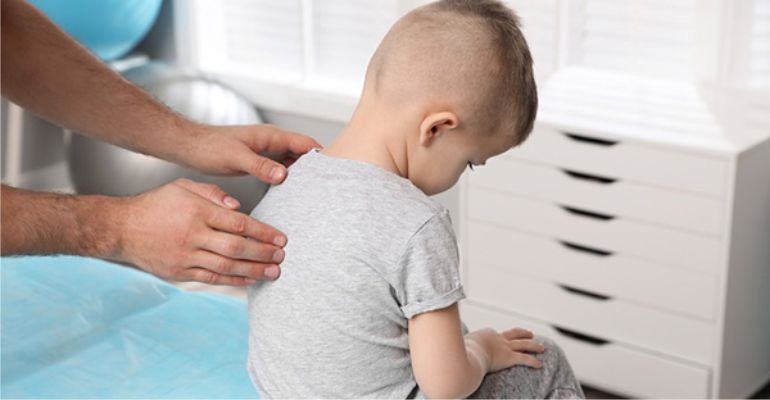PEDIATRIC SPINAL CONDITIONS

Some spine problems develop when normal spinal curves grow too large, or the spine curves in the wrong way. Other spine problems occur when the vertebrae are not strong enough to support the spine. Still others are caused by injuries that compromise the structure of the spine.
Tethered spinal cord syndrome is a neurologic disorder caused by tissue attachments that limit the movement of the spinal cord within the spinal column. These attachments cause an abnormal stretching of the spinal cord. This syndrome is closely associated with spina bifida.
For more information regarding tethered cord syndrome and treatment options, please consult our best neurosurgery doctor in Ghatkopar, Mumbai.
For more information regarding tethered cord syndrome and treatment options, please consult our best neurosurgery doctor in Ghatkopar, Mumbai.
Spina bifida literally means “spine in two parts” or “open spine”. Spinal dysraphism involves a spectrum of congenital anomalies resulting in a defective neural arch through which meninges or neural elements are herniated, leading to a variety of clinical manifestations. They are divided into aperta (visible lesion) and occulta (with no external lesion). Meningocele, myelomeningocele, lipomeningomyelocele, myeloschisis and rachischisis are the usual names associated depending on the pathological findings. Meningocele involves only the meninges with no neural involvement; others have variable extent of neural involvement. The spina bifida aperta is usually associated with skin defect with an impending risk of CSF leak constituting “open defects,” whereas the occult forms have normal skin cover. Both forms demand different approaches in their management.
For more information regarding tethered cord syndrome and treatment options, please consult our best pediatric neurosurgeon in Ghatkopar, Mumbai.
For more information regarding tethered cord syndrome and treatment options, please consult our best pediatric neurosurgeon in Ghatkopar, Mumbai.
Meningomyelocele or myelomeningocele, commonly known as open spina bifida is a devastating congenital malformation of the central nervous system and is associated with significant morbidity and mortality.
Neural tube defects are of two types:
- Open neural tube defect means that the defect is either not covered at all or just covered by a membrane. It comprises about 80% of all neural tube defects.
- Closed neural tube defect: No apparent defect externally, usually result from a defect either in the fat, bone, or membranes covering the spinal cord.
Myelomeningocele is the most common open neural tube defect. It is characterized by failure of the neural tube to close in the lumbosacral region during embryonic development (fourth-week post-fertilization), leading to the herniation of the meninges and spinal cord through a vertebral defect. The neural tube fusion starts at the level of the hindbrain (medulla and pons) and progresses rostrally and caudally. Incomplete fusion caudally leads to the formation of meningomyelocele around day 26 of gestation.
For more information regarding tethered cord syndrome and treatment options, please consult our best pediatric neurosurgeon in Powai, Mumbai.
Neural tube defects are of two types:
- Open neural tube defect means that the defect is either not covered at all or just covered by a membrane. It comprises about 80% of all neural tube defects.
- Closed neural tube defect: No apparent defect externally, usually result from a defect either in the fat, bone, or membranes covering the spinal cord.
Myelomeningocele is the most common open neural tube defect. It is characterized by failure of the neural tube to close in the lumbosacral region during embryonic development (fourth-week post-fertilization), leading to the herniation of the meninges and spinal cord through a vertebral defect. The neural tube fusion starts at the level of the hindbrain (medulla and pons) and progresses rostrally and caudally. Incomplete fusion caudally leads to the formation of meningomyelocele around day 26 of gestation.
For more information regarding tethered cord syndrome and treatment options, please consult our best pediatric neurosurgeon in Powai, Mumbai.
